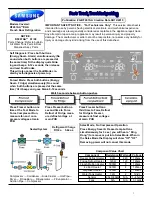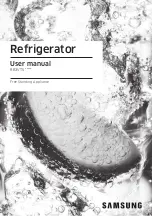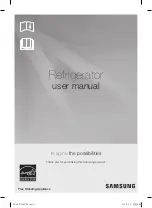
13
from heat sources and heating ducts, as well as away from direct
sunlight.
• Let hot foods cool to room temperature before placing them in the
refrigerator. Overloading the fridge forces the compressor to run longer.
Foods that freeze too slowly may lose quality or spoil.
• Be sure to wrap foods properly and wipe containers dry before placing
them in the fridge. It will cut down on frost build-up.
• The storage bin should not be lined with aluminium foil, wax paper or
paper towelling. These liners will interfere with the cold air circulation,
making the appliance less efficient.
• Organise and label your food to reduce door openings and extended
searches. Remove as many items as needed at one time and then
close the door as soon as possible.
Disposal
• This marking indicates that this appliance should not be
disposed with other house-hold wastes. To prevent possible
harm to the environment or human health from uncontrolled
waste disposal, recycle it responsibly to promote the
sustainable reuse of material resources.
• Old units still have some residual value. An environmentally friendly
method of disposal will ensure that valuable raw materials can be
recovered and used again.
• The refrigerant used in your unit and insulation materials require
special disposal procedures. Ensure that none of the pipes on the back
of the unit are damaged prior to disposal.
• Up to date information concerning options of disposing of your old
unit and packaging from the new one can be obtained from your local
council office.
• When disposing of an old unit break of any old locks or latches and
remove the door as a safeguard.


































